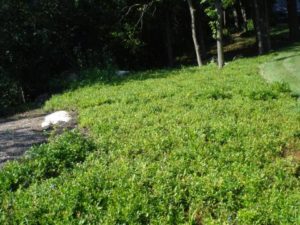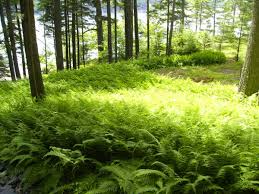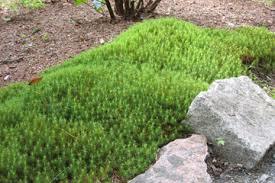Lowbush Blueberry Sod
 Vaccinium Angustifolium 6-24″ and spreading. Blueberry growers in Maine usually don’t bother with the “lowbush” distinction; to them, this is the only true blueberry. Folks from away may know these berries from the grocery freezer, labeled Maine Wild Blueberries.
Vaccinium Angustifolium 6-24″ and spreading. Blueberry growers in Maine usually don’t bother with the “lowbush” distinction; to them, this is the only true blueberry. Folks from away may know these berries from the grocery freezer, labeled Maine Wild Blueberries.
Though plants and berries are diminutive, the taste is supreme. Lustrous blue-green medicinal foliage is good in teas and turns an amazing combination of bronze, orange and scarlet in the fall. Grown in Maine long before Europeans came Downeast, blueberries are still a local favorite and cultivated on thousands of acres. Native to northeastern U.S. Spreads by seed and rhizomes. Transplants will gradually form colonies. Zones 3-7.
Hay-scented Fern Sod

Dennstaedtia A perfect plant to prevent erosion, it’s a very tough, fast spreading, lacy fern. It adapts to drier soil as well as damp soil. Fine textured, it has a fresh spring green color. It is a medium grower to about 15″ and is from the Bracken Fern family. The crushed fronds do actually have the scent of fresh hay! The golden fall color is a bonus. Zones 3-8.
Haircap Moss Sod

Polytrichum Commune – The needle-like but soft foliage reminiscent of tiny pine trees. Since moss has no true roots, it obtains all its nutrients from the air and requires only a firm soil bed with adequate shade, acidic soil and moisture. Zones 2-15.
Landscape Use: Ground cover, around base of tree & shrubs, between pavers on a shady garden path.
Haircap Moss needs plenty of water to survive. Moss does best in shade and it will thrive in compacted and poorly drained soil. Moss prefers soil rich in iron, a soil amendment you can buy at garden stores.
Return to Home Page
